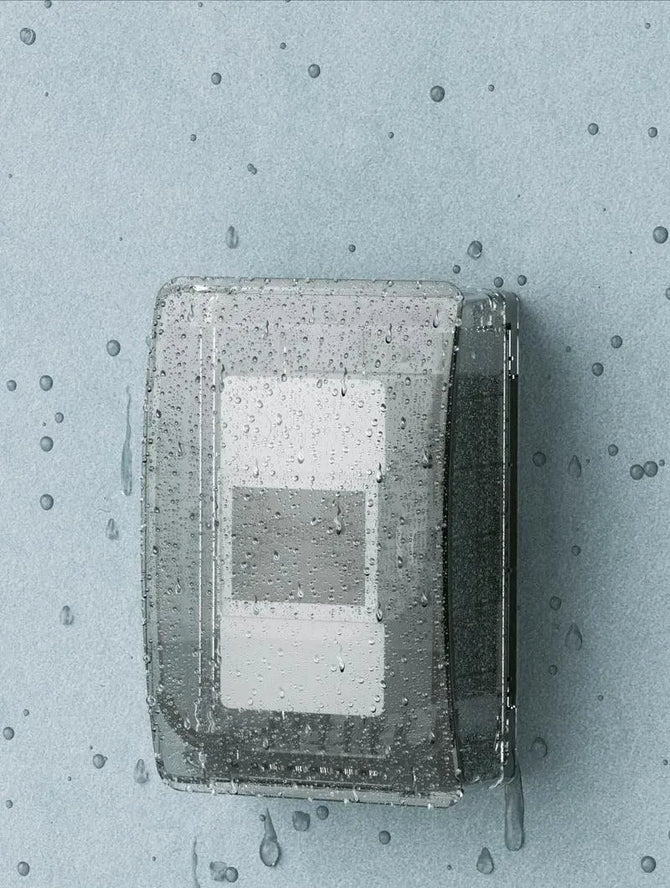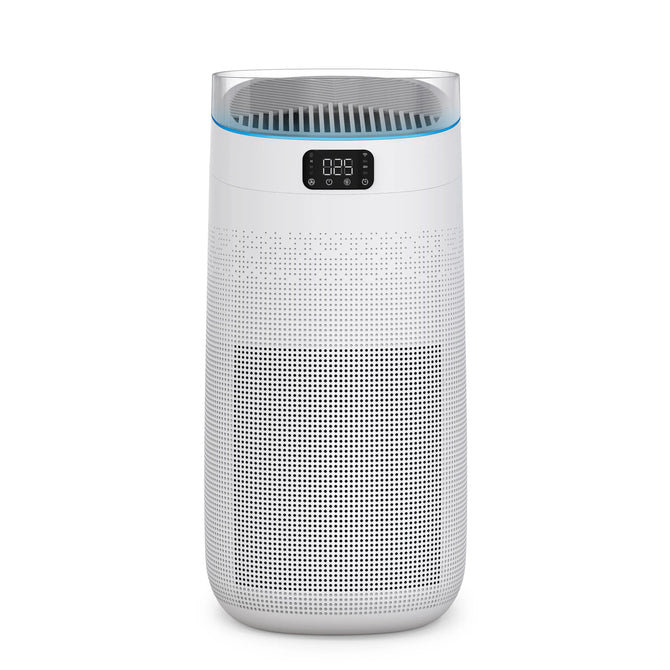The smart home revolution is making our lives easier through technology-enabled convenience, efficiency, and accessibility. Our homes are transforming into intuitive, automated environments with the proliferation of interconnected smart devices. From seamless system integration to AI-powered appliances, emerging innovations are enabling homes to actively assist us by taking care of chores, tasks, and other household duties with minimal effort on our part. This new wave of clever products is redefining what a home can be – a responsive assistant catering to our needs.

Unifying Household Control with Automation
At the heart of the connected smart home is a central hub or control platform that seamlessly integrates all devices and allows unified control through a single interface. Smart home platforms like Amazon Alexa, Google Home, and Apple HomeKit enable voice command capabilities and smartphone control to remotely operate lights, appliances, temperature settings, security systems, and more throughout the home.
With a smart home hub pulling all the strings, you can conveniently turn lights on or off, adjust thermostats, lock doors, monitor cameras, and accomplish many other tasks with simple voice commands or mobile apps. This unified automation and control brings newfound convenience.
One major area where smart devices have automated household duties is lighting. Smart light bulbs and switches allow you to set schedules to turn lights on at certain times of day or have motion-activated lighting for added security and energy savings. No more fumbling in the dark for switches or worrying about wasting electricity from lights left on – your home now effortlessly manages lighting needs.
Beyond lighting, smart plugs allow electronics to be turned on or off remotely according to set schedules and usage patterns. Smart door locks provide keyless, app-enabled control over home access, even allowing you to seamlessly provide virtual keys to visitors. Appliances like refrigerators, ovens, and dishwashers are becoming integrated as well, enabling remote control and monitoring. With everything connected through the home hub, the smart home provides unmatched convenience through automation.

Upgrading Daily Chores with Intelligent Appliances
Beyond remote control and automation, many smart home appliances boast advanced features powered by AI and connectivity that simplify daily chores. Smart refrigerators can now track what’s inside them, compile grocery lists for you, and even order items that are running low. You’ll never again forget to pick up milk at the store.
Smart ovens allow you to pre-heat from anywhere and scan packages for recommended cooking instructions. They can also automatically adjust cooking times and temperatures. Other smart kitchen appliances like coffee makers and multicookers can be scheduled to have breakfast or dinner ready right when you need it. The guesswork and effort of planning meals and cooking are reduced with the intelligence built into the newest smart appliances.
In laundry rooms, smart washers and dryers with AI optimize cycles and alert you when laundry is finished. They detect load sizes to add just the right amount of detergent and water. With smart mops and vacuums, routine cleaning around the house can be automated as well. These time-saving conveniences add up to more leisure time for what’s most important.

Leveraging Connectivity for Enhanced Convenience
Adding smart plugs and switches brings older appliances and electronics into the connected home. These handy devices allow you to turn power on and off remotely through an app and create schedules or triggers based on your usage. Here are many clever connected devices that make homes smarter:
- Smart Plugs: “Alexa, please turn on my coffee maker.” Imagine waking up to freshly brewed coffee without dragging yourself out of bed, thanks to WiFi-enabled smart plugs that let you schedule and control appliances from your phone.
- Smart Lighting: With smart bulbs and switches, say goodbye to fumbling in the dark for a light switch. Just let the motion-detecting lights turn on automatically as you enter a room.
- Smart Curtains: No need to get up and open the curtains yourself – your smart curtain bot will do it for you. Just tap the app and let automated curtains provide some morning sunshine. You can also set a schedule so the curtains open automatically at your desired wake up time.
- Smart Thermostats: With internet-connected thermostats that can be controlled remotely and programmed on a schedule, you’ll arrive home to your desired temperature every time.
- Smart Appliances: Your fridge can scan itself, order milk when you run low, and send cooking instructions to your smart oven. These futuristic, sci-fi-like abilities are the new reality with smart appliances.
- Smart Locks: Avoid the panic of wondering if you locked the door. Just check and secure your smart locks from anywhere via your trusty smartphone app.
Through simple voice or app-based control of devices throughout the home, smart connectivity enables homeowners to enjoy greater efficiency, automation, and peace of mind.

Securing Homes and Lives via Smart Safety Measures
Feel more secure at home and keep loved ones safe with the help of innovative smart safety technologies. These clever connected devices provide round-the-clock monitoring, instant notifications, and robust home protection even when you’re away. Here are some of the top smart technologies securing homes and lives:
- Medical Alert Systems: Seniors and those with medical conditions can wear panic button pendants or wristbands connected to smart monitoring systems. If a fall, heart issue, or other emergency occurs, they can press the button to instantly call for an ambulance or connect with the monitoring service’s 24/7 emergency response center.
- Smart Sensors: Occupancy sensor devices use motion detection to monitor activity and ensure residents stick to normal daily routines like waking up, making coffee, going to the bathroom, etc. If abnormal inactivity is detected, it could mean a fall or emergency has occurred, so alerts get sent to care providers to check in.
- Leak Detectors: Strategically placed internet-connected sensors near appliances and plumbing can monitor for water leaks. The sensors can send notifications to homeowners and property managers as soon as a leak is detected, allowing for a quick response to avoid water damage.
- Outdoor Security: Video doorbell cameras with motion-activated recording can deter potential burglars from targeting a home. Any suspicious nighttime activity near doors will be recorded, and homeowners will be notified to take protective action like calling the police.
- Indoor Cameras: Placing internet-connected cameras inside the home allows 24/7 real-time monitoring and recording from anywhere. Motion-triggered alerts and live views via a smartphone provide peace of mind and quick detection of any unusual activity.
- Lighting Automation: Programming smart bulbs to turn on and off on set schedules or integrating motion sensors gives the appearance of an occupied home. This deters burglars from targeting homes when residents are out or on vacation.
With real-time monitoring capabilities and instant alerts to anomalies, smart safety tech provides protection, security, and peace of mind both inside and outside the connected smart home.

Empowering Special Needs With Smart Home Tech
Smart home technology is playing an invaluable role in empowering those with disabilities, limited mobility, and other special needs by promoting greater independence and improving quality of life. There are many ways smart devices can assist these individuals:
- Smart Health Assistants: Smart pill dispensers equipped with programmable alarms provide helpful reminders for those with memory difficulties to take medications on time. They promote self-reliance in medication management.
- Voice-Controlled Assistants: Individuals with visual impairments can benefit from voice-controlled smart assistants like Amazon Alexa or Google Home to operate appliances, control lighting, adjust temperatures, and more through simple hands-free voice commands.
- Smart Locks: Keyless smart lock systems with keypad or smartphone app entry eliminate the need for handling physical keys, making access easier for those with limited mobility.
- Video Doorbells: Smart video doorbells with two-way audio enhance accessibility for those with limited mobility. Residents who have difficulty walking to the door can see visitors clearly through the doorbell camera without needing to move.
- Home Automation: Those with mobility limitations can greatly improve their independence and ability to control home environments through smart home automation of lighting, thermostats, blinds and more.
- Customized Systems: Smart home systems allow extensive customization to meet specialized accessibility needs, like connecting flashing visual alarms to smoke detectors for the hearing impaired.
With abundant possibilities for customized integration of devices, smart home technology is increasingly adapted to empower those with disabilities. Continued innovation around improving accessibility and inclusion will further enhance possibilities for independent living.

The Future of Smart Living
The future of smart living shines bright as home automation technology advances and integrates with other cutting-edge innovations like augmented reality and artificial intelligence. Combining smart home systems with AR and VR unlocks exciting new possibilities for responsive home environments that adapt to meet human needs in intuitive ways.
3D virtual modeling already allows home layouts and designs to be experienced virtually before construction. Interactive smart mirrors can display weather forecasts, news briefings, and daily schedule details. Walls and windows may transform into interactive displays for entertainment, information, or security monitoring. Even furniture could become intelligent, automatically optimizing positioning and lighting to maximize comfort.
Endless possibilities arise for homes to actively reshape themselves around our preferences when combined with immersive, imaginative innovations. Widespread consumer adoption, interconnectivity between devices and systems, and continual AI advancements will further drive the evolution of smarter homes.
As more tech manufacturers enter the smart home market, increased competition stands to improve the quality and capabilities of devices while driving down costs. This will enable smart living to become accessible to more consumers. The home automation and conveniences we enjoy today are merely a glimpse of what the future has in store. Our homes are on their way to becoming adaptive, intelligent abodes that enrich our lives in exciting new ways.
Conclusion
The integration of advanced technology through smart home devices has opened new possibilities for convenience, efficiency, and safety within our homes. With the ability to connect and control devices through smart hubs, daily chores can be automated and new capabilities unlocked. Ultimately, these smart home innovations save us time, energy, and worry. Our homes are becoming responsive butlers rather than inert buildings. As smart home tech evolves, it will find new ways to seamlessly assist us and tailor our living spaces into intelligent abodes that enrich our lives. The benefits already realized are just the beginning as our homes get even smarter.






































